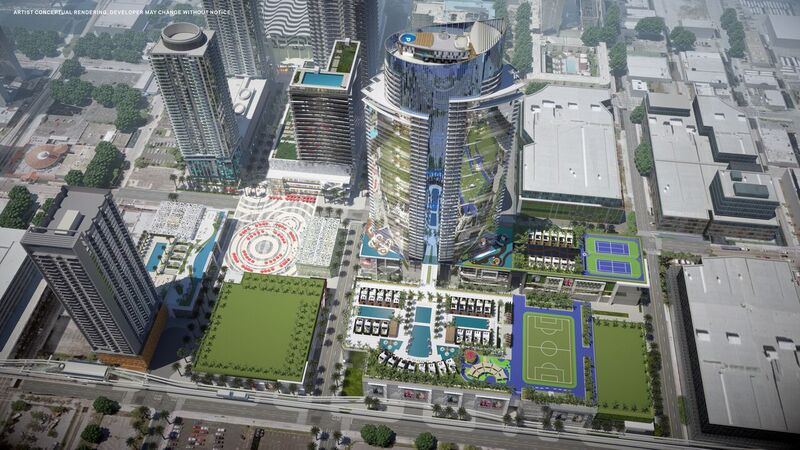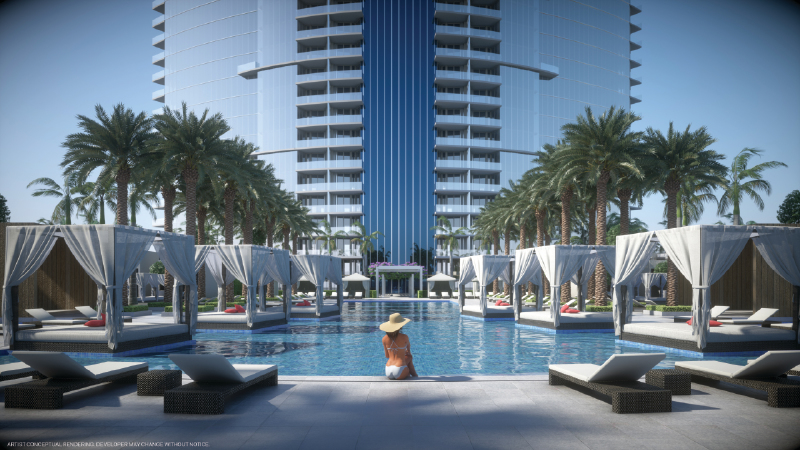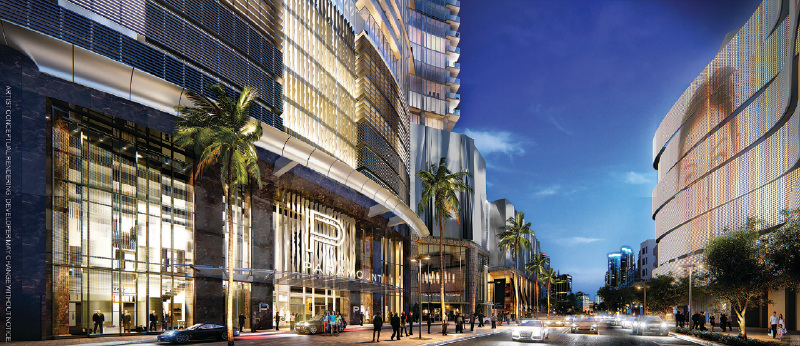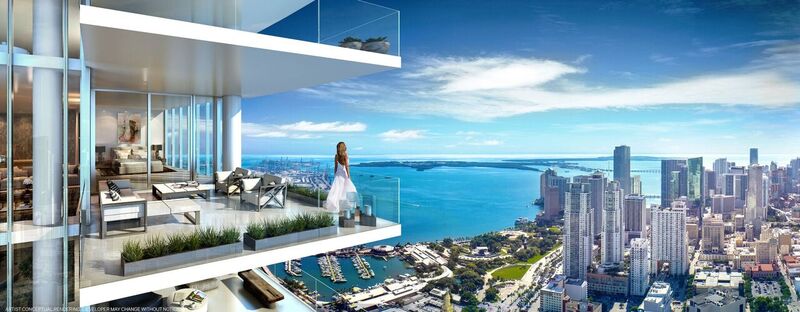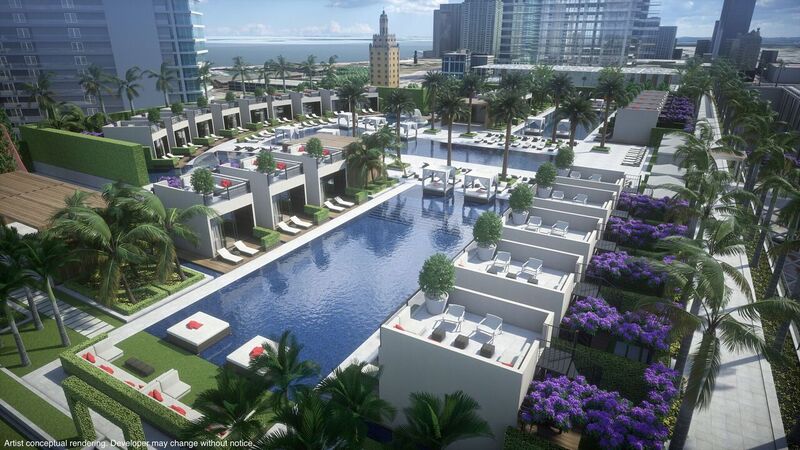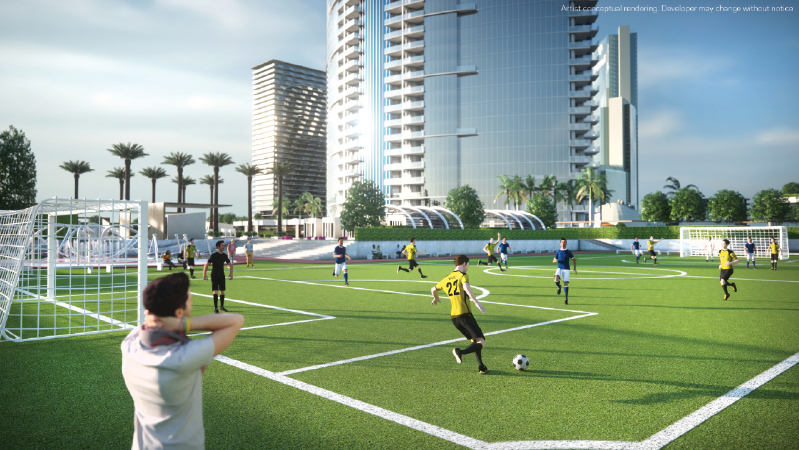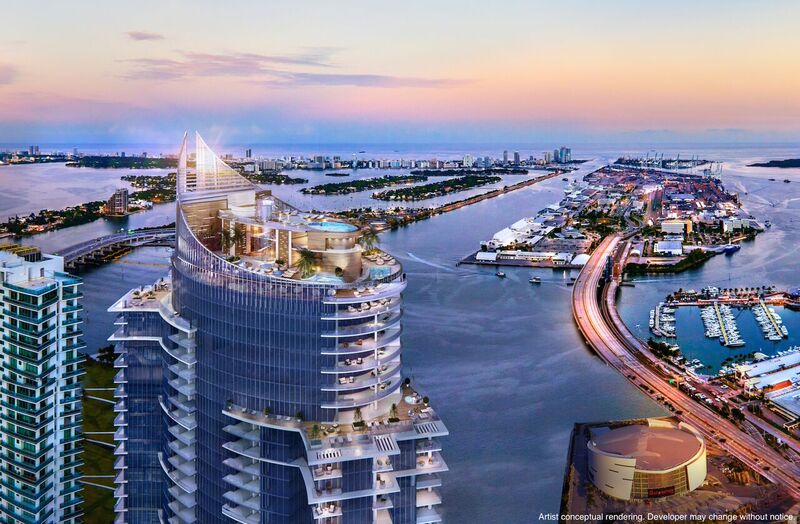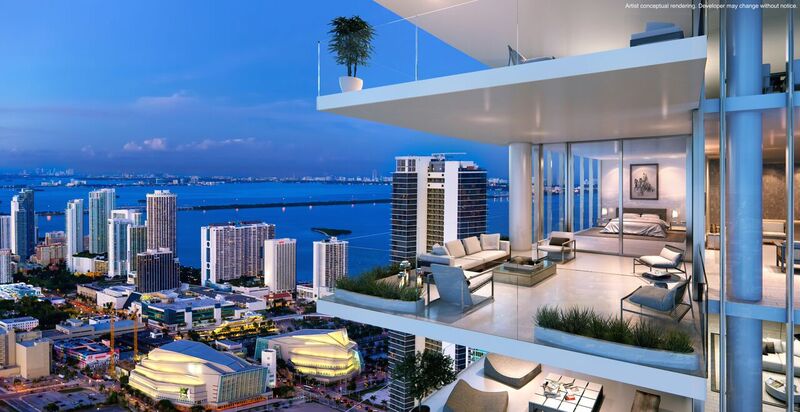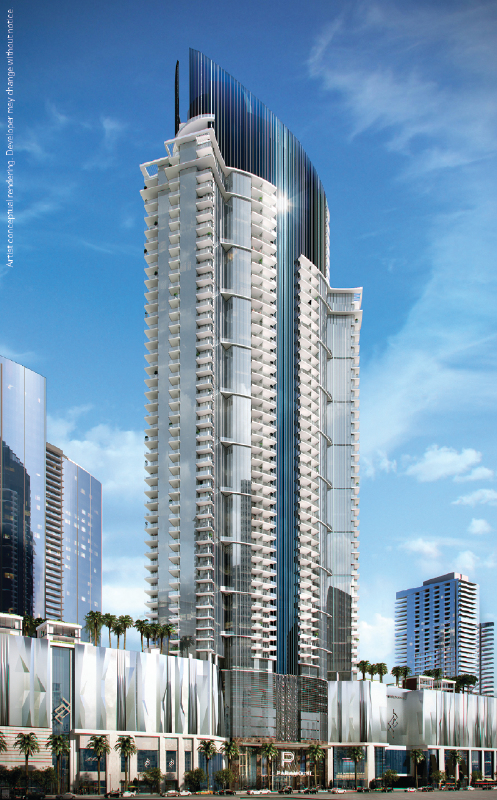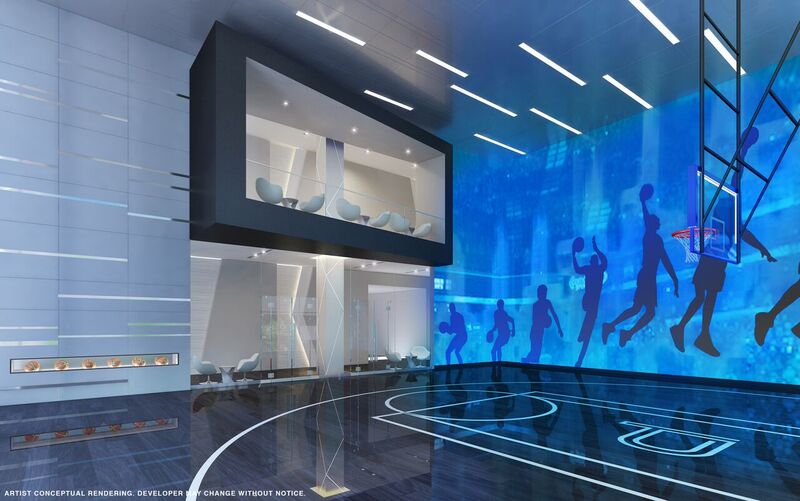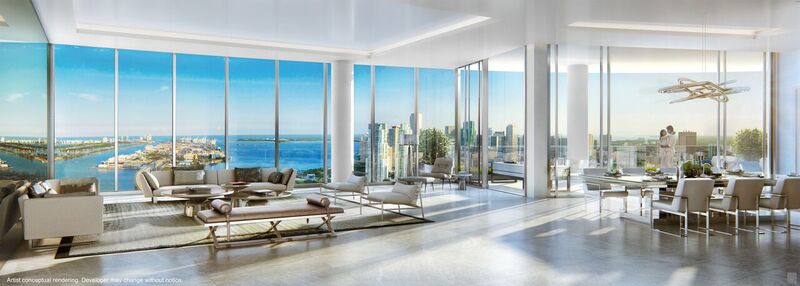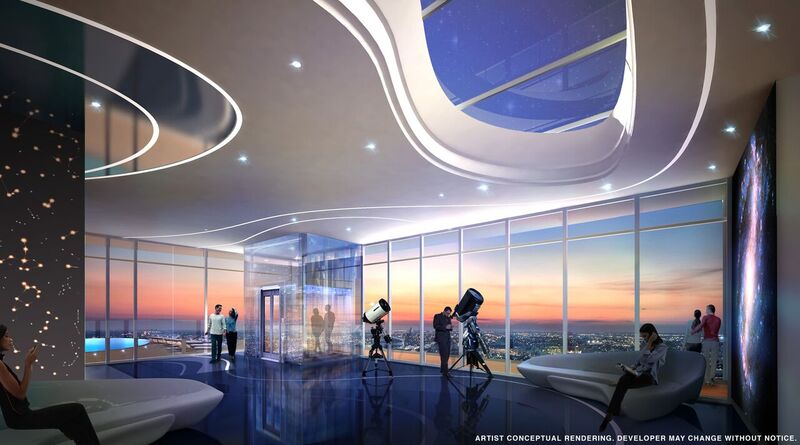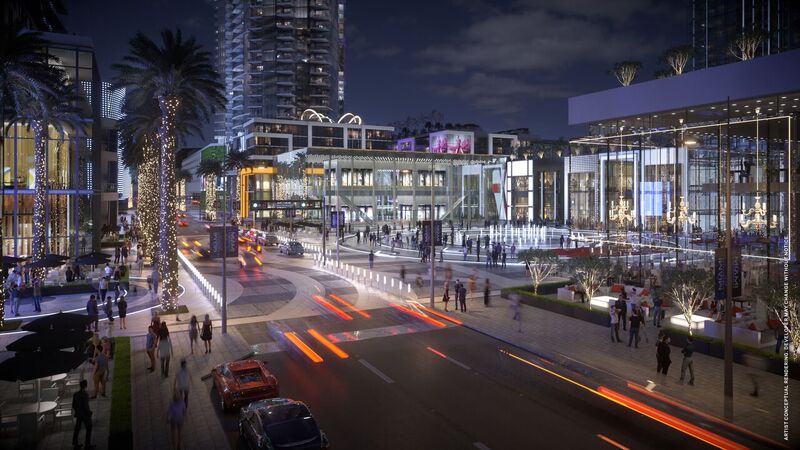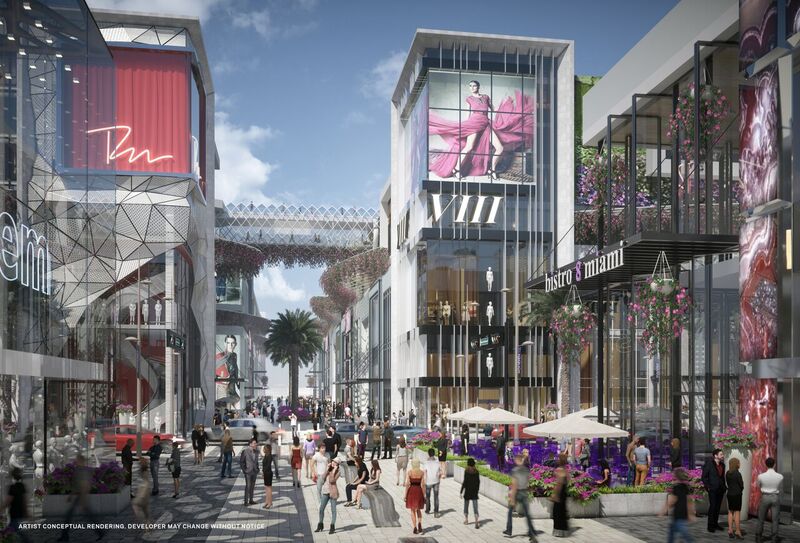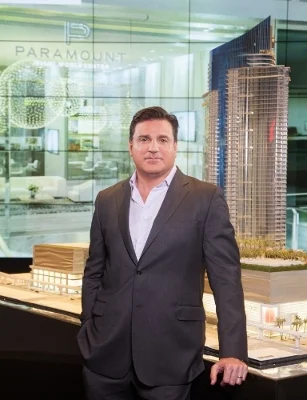PROFILEmiami had the exclusive opportunity to sit down with developer of Paramount World Center and CEO of Royal Palms Companies, Dan Kodsi to discuss PARAMOUNT Miami Worldcenter. The under construction, 60-story signature residential tower of Miami Worldcenter, is among the largest mixed-use projects in the country. The project broke ground in March of this year and recently completed one of the largest foundation pours in the state of Florida. They are paving the way for downtown Miami’s future as a pedestrian-friendly live, work, play destination as residents will be just an elevator ride from the vibrant blend of retail, restaurants, and nightlife planned for the mixed-use development. Currently under construction and featuring more than 40 cutting-edge offerings, PARAMOUNT Miami Worldcenter is the most amenitized residential building in the country – and possibly the world – presenting an unparalleled lifestyle. The 500+ residences will be adorned with a four-acre amenity deck with lush parks and multiple resort-style pools. Kodsi has built the Paramount brand featuring projects such as PARAMOUNT Bay in Edgewater, PARAMOUNT Fort Lauderdale and now PARAMOUNT Miami Worldcenter.
PM: When you first got to Park West what did you find? How has the area changed since then?
DK: I went to University of Miami in 1987 and I remember driving past Park West. I remember saying look at these big open areas of downtown. Five, ten years later, I constantly kept seeing this undeveloped land in the middle of the city. You have to understand how cities grow and how cities get built. My background was in urban planning and my degree was in urban planning. Understanding absorption rates, the path to development just wasn't there yet. It's just getting there today. It's funny to think that this was just 30 years ago. [There was this vast undeveloped land in the middle of a major city, right in the center of everything. In between Miami Beach and the suburban neighborhoods, everything is right here. It was begging to be developed. Begging to be something greater, which is what it is going to become with Miami World Center.]
In 2003 I brought the site directly across from American Airlines Arena. When I brought that they had just started to develop 900 Biscayne. Right after everyone started panicking and these blocks started going quickly. Unfortunately I don't own it today, the market went into a deep recession in 2009 and I didn't know how long I would need to hold onto it. If you were in real estate development in 2009 it was not a good time. But in 2004 and 2005 I actually started buying a lot of this land in Park West, so I used to be one of the owners. Miami Worldcenter Association is by main principle Art Falcone. He brought a lot of these properties from me. I actually started assembling it, then he started assembling it. We knew each other because we used to build in the same neighborhoods in Broward County. We used to be in the same office building and we did business together in the '90's. What happened was we had a meeting and we said you're assembling this, I'm assembling this, it makes sense for one group to develop all the parcels. So I made an agreement to sell in 2006, 2007. Then came 2008, but eventually we were able to get the whole assemblage done.
PM: How did the concept for PARAMOUNT Miami Worldcenter come about? How has it changed since the original proposal?
DK: If you step outside, you will see the change. In the next 24 to 36 months you will see an entire portion of the city of Miami completely converge into a new city within a city. 6 different towers are being built here with almost 400,000 SF of retail so it is going to be a significant change. We have 5 blocks of pedestrian retail, significant road closures that allow for pedestrians to walk around the center of downtown. The type of retail which is high-street retail is going to create flagship stores. Some of the stores that are going to come here are going to create their premiere flagship store in Miami. It's going to be quite a big change. It hasn't changed much since than besides all of the construction work you see, which probably makes it look worse than better for now, but that is the beginning of something that is going to be magnificent.
PARAMOUNT was a brand I created in 2005, I launched a project called PARAMOUNT Bay. I also launched a project called PARAMOUNT Beach in Sunny Isles but we made a decision to not break ground because I saw the market getting shaky, and I also sold that asset. As I started developing again after the recession I wanted to revive this brand concept that we had. It is a more upscale, modern, residential brand. We have the consistent product where we have private elevators, 10 ft ceilings, bigger outdoor space, there's better living space, there's better living space, there is good strong finishes, and there is a strong service component to it. We want to create this consistency so PARAMOUNT Miami Worldcenter is the third PARAMOUNT, and are looking at another 2 more projects under the PARAMOUNT brand.
PM: What has been the biggest obstacle to overcome to bring PARAMOUNT to completion?
DK: From a technical standpoint, it was the right decision when they went from an indoor mall to an outdoor mall. Everyone whose brought here, everyone in the neighborhood, everyone in the city have embraced the fact that we are not doing an enclosed mall. People don't want to walk around these indoor malls anymore. It was the right decision, but it was a huge obstacle because I had a whole building designed that I had just started construction on. It completely changed from a technical standpoint changed, all the engineering, all the structure. I had to react quickly to make those modifications, which are done today. We lost a little bit of time but we were able to maintain our schedule. I would say that that would be our biggest obstacle.
PM: What is one feature of PARAMOUNT that the residents are sure to love that buyers may not have thought about yet?
DK: I think people don't realize the floor-plans, the efficiency of our floor plans. Something simple like that. At the end of the day, we could talk about amenities and location, but you live in your home. You live in that confined space we call home. It's amazing how much time of our life we spend in our home. We really spent a lot of time focusing on very efficient floor plans. We look at furniture layouts and how people are actually going to live in their home. We offer big open spaces for how you are going to entertain in your home. We took a balcony which always have been forever wraparound and 5 feet wall. You cannot furnish that. We created the outdoor living room. It actually becomes an extension of your home. I don't think people realize how great the magnitude of these spaces are. Then again we boast the best amenities in the world. We have essentially everything I can't think of anything were missing anymore. It's going to take you about a day to tour the building.
The second one is I think there is going to be the sense of a resort feel at our pool deck. It is like I am on vacation, I'm relaxing, but then I am in the middle of a city. I go downstairs and have all the facilities of a city. You can go to a concert at the performing art center, then all of the museums and the waterfront. All these are within steps of PARAMOUNT.
PM: Once the project is complete, what will the Paramount and Miami World Center projects contribute to both the city and state.
DK: It will be a signature tower that will signify that you have arrived to Miami. Coming from the airport to South Beach everyone is going to pass this building. All of the buildings on Biscayne Boulevard have their back facing you when you drive up to them, you can only see the front coming from South Beach. What we did is the front of our building is facing (west) when you drive up to the city. It will give the skyline an entirely new dimension.
Miami Worldcenter has a plethora of contributions to the city and the state because it is going to be a destination. You have Brightline that is going to be dropping people off from Orlando and the state of Florida, they will come off a train right into Miami Worldcenter. You will have hotels, 5 streets of pedestrian shopping. Now when you get to Miami you do not have to get in a car and go to South Beach. Here you are going to get to Miami, walk off a train, and be in the middle of a city.
PM: Where do you see the Park West area of Downtown’s place in Miami over the next decade? Twenty years?
DK: What is different about Miami Worldcenter is all of the other blocks that are still undeveloped once the first phase is developed, you will see a continuation of this ground floor retail because all of these retailers will want to be next to other retailers. It will have an opportunity for organic growth that no other city has. Another developer can come buy another site nearby and create great ground floor retail. Miami Worldcenter has the potential to become greater than it already is for the fact that it has the opportunity for organic growth. You will wake up 20 years from now and have 4 or 5 more blocks completed that haven't even contemplated right now. It will start to allow it to be more dynamic.
PM: As prices in Miami start to fall, prices in Park West have stayed somewhat strong, even rising in some buildings such as Marquis. Why do you think this area is not showing the same market response to increasing inventory as other neighborhoods?
DK: Simply because there is not a lot of inventory. Not as much as in Brickell or Edgewater, and there is a lot of different inventory here. If you look at the product that was built here, take the 4 buildings in Park West, you have the views. Some of those buildings never performed very well, they never appreciated. Now you have One Thousand Museum that takes it to an entirely different level. The main reasons pricing is hold here more than anywhere else is the anticipation of Miami World Center. People are looking at it like once Miami World Center is built, this will be the center of town. It isn't going to be Brickell, or Edgewater or Mid Town. Design District is super high-end but there is no density there. No hotels. This is going to be the place to live. If you are going to be an owner and you want to own Downtown you are only going to have a few buildings to choose from which are end-user quality.
PM: Construction in Miami is booming and it seems the developers are putting their heads down and plowing full steam ahead. How has the reception from the public been in Miami compared to potential buyers and real estate professionals from other cities?
DK: If you look at the players that are building here, they are all Miami developers who have built a building. Whether it is Turnberry, myself, Related, Fortune, Dezer, everyone has built a building. There are some new guys, but most of those new guys have broken ground yet. All of the guys under construction are guys that have built projects. I don't think anyone is plowing ahead. Related, who never delays a project, delayed their Auberge project, which I think was the right decision. I think people are being very rational in this market. There are no new starts. There are announcements of a couple of new projects but I think they are going to have a tough time to get from a reservation to a contract in todays market. You literally see that starts have declined almost 70% in the past few months. I don't think you are going to see many starts in 2017. You are going to see a few, there are some people who are going to build their projects because they have the cash. Guys who need financing are going to have trouble getting their building off the ground.
